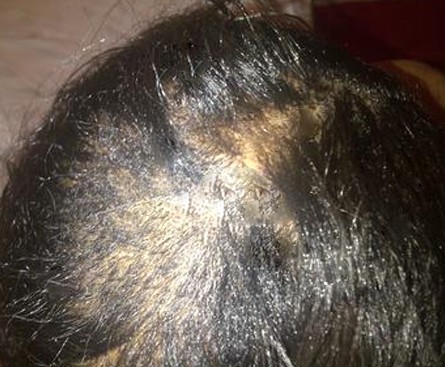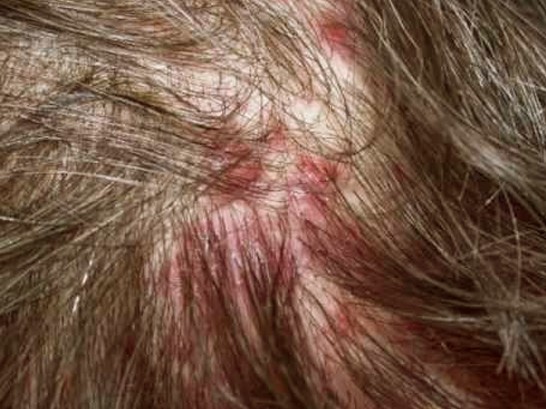Dandruff vs Dry Scalp : Definition

Dandruff can be defined as the excessive shedding of dead skin cells, occurring at the level of the scalp. This condition is also known as pityriasis capitis or scurf, being often caused by the frequent exposure to extreme temperatures (extreme heat or cold). Apart from the white flakes that are characteristic for the dandruff, the skin on the scalp can appear to be oily. The white flakes are often seen not only in the hair but also on the shoulders. Sometimes, because of the excess production of sebum at the level of the scalp, the person can suffer from itchiness (from moderate to severe).

The dry scalp is defined by the excessive shedding of the dead skin cells as well, the difference lying in the fact that this condition is caused by a disruption in the normal flora of the skin. It is important to understand that the scalp renews its skin cells at every thirty days but the disruption of the skin flora can intensity the regular shedding rate of the dead skin cells. As the scalp sheds the dead skin cells at a faster rate than it should, the skin appears to be dry. Apart from the white flakes characteristic for the dry scalp, the skin can become irritated and itchy. Because of the constant irritation of the skin, a characteristic redness appears.
Causes of Dandruff and Dry Scalp
These are the most common causes that lead to the appearance of dandruff:
- Not washing your hair regularly
- Buildup of skin cells and sebum at the level of the scalp
- Skin conditions
- Psoriasis
- Rapid buildup of dead skin cells at the level of the scalp (fast turnover rate)
- Thick scales appear on the scalp
- Eczema
- Chronic inflammatory skin condition
- Malassezia overgrowth (fungal infection)
- Fungus found normally on scalp
- Overgrowth – irritation and excess sebum production – dandruff
- Unknown cause for the overgrowth
- Psoriasis
- Dry scalp skin
-
- Common cause of dandruff
- White and dry flakes
- Seen in the hair and also on the shoulders
-
- Contact dermatitis
- Sensitivity to hair products (hair dye, shampoo, conditioner)
- The scalp becomes irritated, dry and itchy (scaly skin)
- Can become aggravated by the excessive or frequent usage of irritating products
- Seborrheic dermatitis
- Often seen in those who have the oily skin type
- Irritation of the scalp skin
- The skin on the scalp is also oily and red
- White or yellow flaky scales are present at the level of the scalp
- May also be seen in other areas, such as the eyebrows, back of the ears, lateral sides of the nose, groin or armpits.
These are the most common causes that can lead to the appearance of the dry scalp:
- Washing your hair too frequently or excessively
- The natural oils from the level of the scalp are removed
- The scalp is no longer hydrated, becoming dry (skin flakes off)
- Skin conditions (the cell turnover is no longer regulated)
- Psoriasis, eczema, contact dermatitis etc.
- Exposure to excessive temperatures (heat/cold)
- The skin on the scalp is sensitive to the dry air
- Cosmetic products
- Chemical dyes, styling products, shampoos etc.
- The skin on the scalp is red and dry.
Treatment
These are the most common measures of treatment that can be taken for dandruff:
- Anti-dandruff shampoo
- Contains salicylic acid – helps with the removal of dead skin cells from the level of the scalp
- Also contains zinc pyrithione – anti-fungal effect
- Other beneficial ingredients – selenium sulfide, ketoconazole
- Shampoo or conditioner that contains tea tree oil
- Tea tree oil – natural remedy against dandruff; antibacterial and antifungal properties
- If the tea tree oil is used in its natural form, it should be diluted with water before being added to the scalp
These are the most common measures of treatment and self-care that can be taken for the dry scalp:
- Less frequent shampooing and with cooler water (the hot water removes the natural oils from your scalp, causing it to become tight and dry)
- Brush your hair gently before the actual washing of the hair, as this will help with the elimination of the dead skin cells
- Reducing the usage of hair care products (especially when it comes to those who have an irritating effect)
- Use natural oils to replenish the levels on the skin scalp
- Apply conditioner to your scalp to keep it hydrated
- Switch to a professional shampoo, preferably one that contains tea tree oil (soothing effect on the skin); however, you should avoid the excessive usage of tea tree products (as these can have a drying effect on skin when used too frequently)
Dandruff vs Dry Scalp : Prevention
These are the general measures you can consider for the prevention of both dandruff and the dry scalp:
- Reduced usage of hair care products
- Valid for – hair mousse, gel or hairspray
- Can increase the dryness at the level of the scalp
- Can also cause an allergic reaction or stimulate the shedding of the dead skin cells (dandruff)
- Balanced diet
- Recommended – foods that are rich in omega-3 fatty acids, vitamins (B complex) and zinc
- Adequate quantities of water (so as to ensure the proper hydration of the scalp)
- Combat the stress
- Stress can have a negative impact on the immune system
- Use meditation, yoga or relaxation techniques to combat the stress in your life.
For the prevention of dandruff:
- More frequent shampooing
- Thorough rinses of the hair after washing
- Anti-dandruff shampoos
- Hair care products recommended for oily skin.
For the prevention of the dry scalp:
- Less frequent shampooing
- Shampoo recommended for dry scalp + deep conditioner (hydrate the skin on the scalp)
- Scalp massage with aromatic oils
- Hydrate the scalp, reducing the shedding of the dead skin cells
- Increased blood flow to the scalp (more nutrients and vitamins to the area – healthy skin and hair)
- Avoid scratching the scalp
- Can aggravate the irritation of the skin
- May also lead to infection, if the skin is damaged (+bacterial or fungal overgrowth).
As you have seen, these two conditions are different but they both come down to the same matter. We all have to take good care of your scalp, as a healthy scalp will also mean a healthy hair. For most of us, both the dandruff and the dry scalp are related to an aesthetic problem, as it can be quite uncomfortable to walk around worrying about what other people might say. The social skills can become really impaired when one suffers either from dandruff or a dry scalp, so it is important to take action before it is too late. You have seen both the ways in which these problems can be solved, as well as the steps that you can take in order to prevent them. Keep your scalp healthy!




